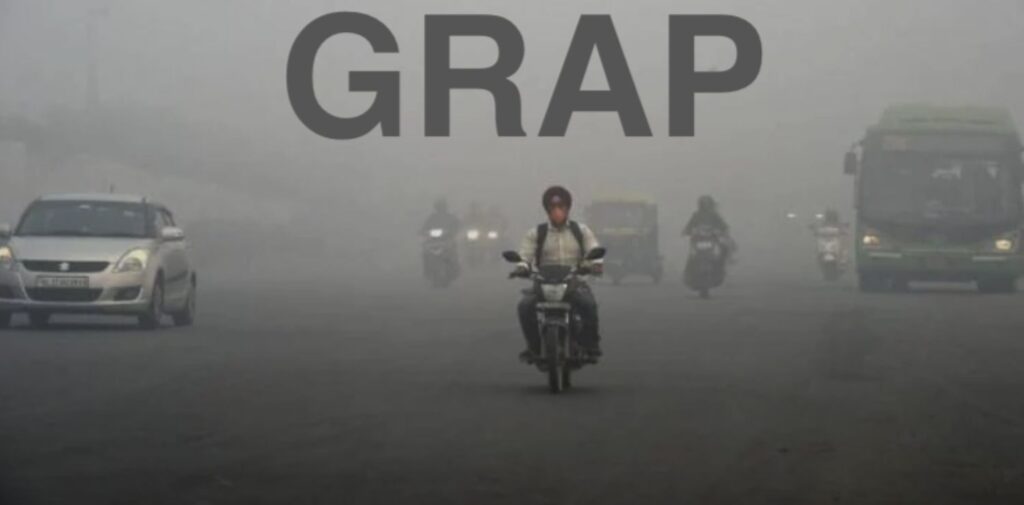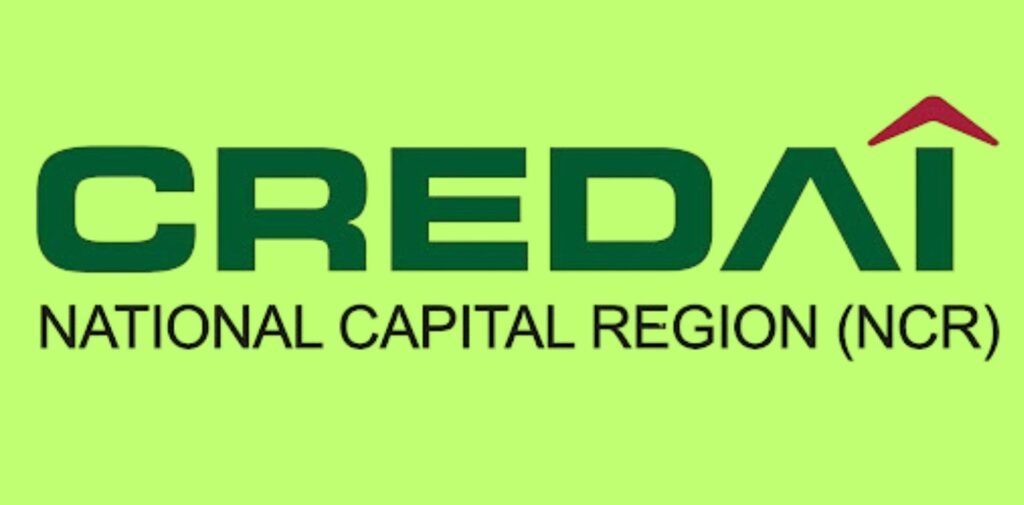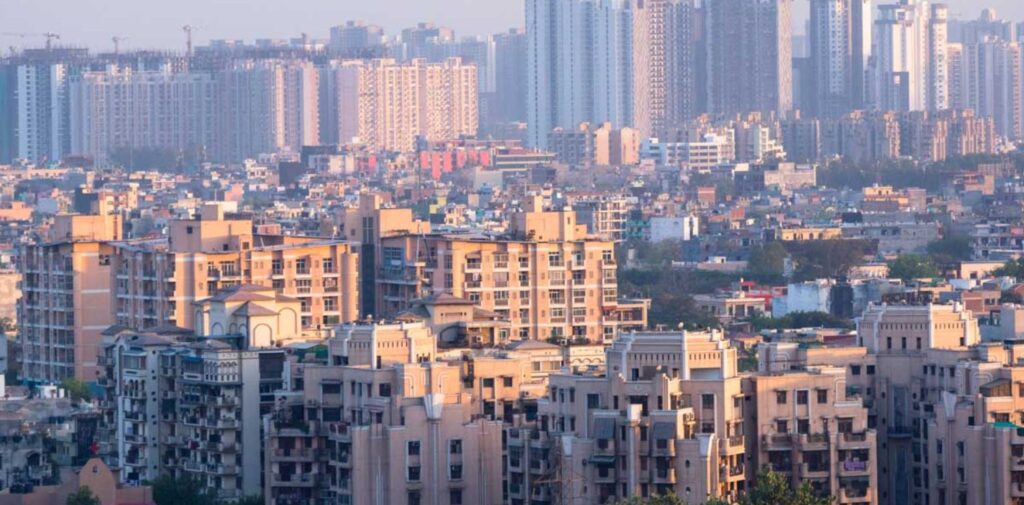With air pollution becoming a recurring issue in Delhi, the government has enforced Stage 1 of the Graded Response Action Plan (GRAP) ahead of Diwali. This step is part of a proactive approach to control the rising levels of air pollution, particularly in the winter months when it tends to spike due to several factors such as vehicular emissions, stubble burning in nearby states, and construction dust. The impact of GRAP on real estate is significant, especially for developers and buyers in the National Capital Region (NCR).
The Confederation of Real Estate Developers’ Associations of India (CREDAI NCR) has issued new guidelines for its member developers to ensure compliance with GRAP, especially as construction activity is a major contributor to air pollution in the region. Here’s what developers and potential property buyers need to understand about these restrictions and how they could affect the real estate landscape in Delhi-NCR.
What is GRAP?
The Graded Response Action Plan (GRAP) was introduced as a multi-level strategy to combat air pollution in the Delhi-NCR region. GRAP is divided into four stages, with each stage activated based on the severity of air quality. Stage 1 comes into effect when the Air Quality Index (AQI) is between 201 and 300, classified as “poor.” This stage primarily targets dust and vehicle emissions, which are among the biggest pollutants in Delhi during this time of year.
Stage 1 involves several restrictions, such as:
- Ban on open waste burning
- Strict control on dust from construction activities
- Promotion of public transport to reduce vehicular emissions
For the real estate sector, construction dust is a major area of concern, as dust particles from building sites contribute to the poor air quality in the region.

How GRAP Stage 1 Affects Real Estate Developers
Construction is a key sector in Delhi-NCR, but it is also a significant source of particulate matter (PM2.5 and PM10), which deteriorates air quality. Under Stage 1, developers must follow strict regulations to control dust from construction sites. This includes:
- Dust Management Plans: Developers are required to implement dust management strategies at all construction sites. This could involve using dust suppression measures such as water sprinklers, installing wind-breaking screens, and covering construction material to prevent it from being dispersed by the wind.
- Curbing Construction Activities: While GRAP Stage 1 doesn’t mandate a complete halt of construction work, it requires developers to limit activities that generate significant dust. This means that tasks like demolition, earth-moving, and the transportation of materials might be restricted during the GRAP period.
- Use of Green Cover: Developers are encouraged to maintain green belts around construction sites. Planting trees and shrubs can help absorb dust particles, reducing the spread of pollutants from the site.
- Monitoring and Compliance: CREDAI NCR has instructed its members to ensure strict compliance with GRAP guidelines. Non-compliance can result in hefty fines and penalties, and could also lead to reputational damage for real estate companies.
How Does GRAP Impact Homebuyers?
For homebuyers, GRAP restrictions might cause some delays in construction timelines, particularly for projects in the initial stages of development. This is because developers may need to slow down certain dust-generating activities during periods of high pollution. However, this also has a positive side: projects that comply with GRAP regulations are likely to implement better environmental practices, which could enhance the quality of life for future residents.
Additionally, buyers should be aware that some developers might pass on the costs of dust management and other pollution control measures to the final property price. It’s essential to communicate with developers and get clarity on any potential cost escalations due to these environmental regulations.

CREDAI NCR’s Role and Recommendations
CREDAI NCR has been proactive in helping developers navigate the complexities of GRAP. Some key recommendations include:
- Using eco-friendly construction materials: Developers are encouraged to use materials that generate less dust and are more sustainable.
- Real-time monitoring: CREDAI suggests that developers install air quality monitoring systems at large construction sites to track and manage pollution levels more effectively.
- Collaboration with authorities: Developers are advised to work closely with local government bodies to ensure compliance and to seek guidance on best practices for dust and pollution control.
Long-term Implications for Real Estate in Delhi-NCR
While GRAP restrictions are focused on immediate pollution control, the long-term implications for the real estate market in Delhi-NCR could be significant. As air quality concerns continue to dominate headlines, sustainability in construction is becoming a key focus for developers. Buyers are increasingly looking for homes in eco-friendly developments that prioritize green building practices.

This shift towards sustainability could lead to a higher demand for green-certified buildings, which are designed to minimize environmental impact. Developers who incorporate sustainable practices not only comply with GRAP guidelines but also position themselves as market leaders in a future where eco-conscious living is a priority for buyers.
Additionally, real estate projects in areas with better air quality could see a premium in pricing, as residents seek healthier living environments away from the pollution of central Delhi. This could lead to a shift in demand towards outskirts of NCR, where pollution levels are comparatively lower.
Conclusion: A Cleaner Future for Delhi-NCR?
The implementation of GRAP Stage 1 is a necessary step to tackle Delhi’s persistent pollution problem. For the real estate sector, this means adapting to new regulations and focusing on sustainability to ensure continued growth in the face of environmental challenges.
While the restrictions may present some challenges in the short term, the long-term benefits of complying with GRAP – from improved air quality to sustainable construction practices – will ultimately lead to a healthier and more resilient urban environment for both developers and homebuyers in Delhi-NCR.
By embracing these changes, real estate developers can not only contribute to the fight against pollution but also create a more sustainable and attractive market for future buyers.




